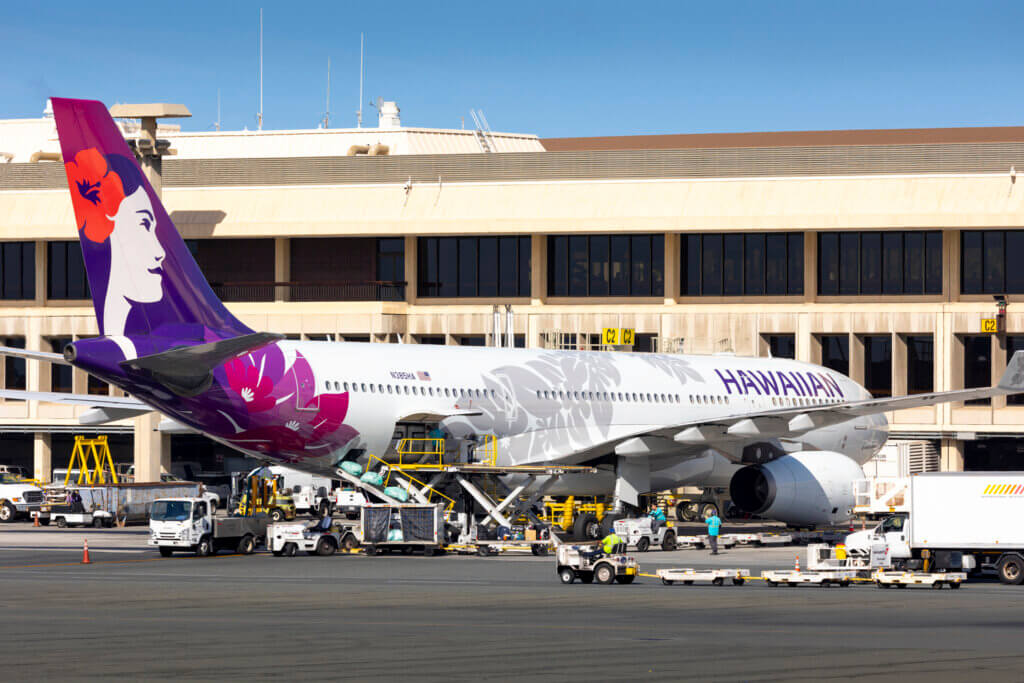Though Alaska’s acquisition of Hawaiian is still pending Department of Justice approval, the two airlines are continuing to work toward their eventual combination. We recently learned that Alaska and Hawaiian applied for exemptions with the Department of Transportation.
Airline mergers are complex undertakings. In the worst cases, passengers see widespread disruptions during the process. However, in better-run mergers, passengers see minimal to no disruptions. Alaska Airlines and Hawaiian Airlines seek to have a merger of the latter variety and are taking steps now to help increase their chances of doing so. For example, recently, Alaska and Hawaiian applied for exemptions, which will allow them to continue service on their international routes.
Alaska and Hawaiian Applied for Exemptions
In an application filed by both companies, Alaska and Hawaiian applied for route exemptions and requested to begin the process of transferring Hawaiian’s international route authority to the Alaska Air Group. The exemption Alaska and Hawaiian are seeking is 49 U.S.C. 41105, which states that the transfer of an air carrier certificate must receive the approval of the Secretary of Transportation and may only be approved if it demonstrates that doing so is consistent with the public’s interest. The exemption here would allow Hawaiian Airlines to operate on its own while under the ownership of Alaska Air Group (AAG). It would remain in effect until AAG can obtain a new operating certificate covering the merged airline.
In addition to the 49 U.S.C exemption, AAG is asking the Department of Transportation for a de facto transfer of Hawaiian’s international route authorities to it. AAG then wants the route authorities of it and Hawaii re-issued under both Alaska Alaska Airlines, Inc. and Hawaiian Airlines, Inc. This action would allow both airlines to maintain their current international routes, including codeshare routes operated by foreign airlines. As a reminder, Hawaiian operates to international destinations around the Pacific, including Japan, Aotearoa, Australia, Korea, French Polynesia, and the Cook Islands. Alaska Air flies to Canada and Latin America.
Interesting Tidbit
In the joint application, there were a couple of interesting bits of info, including these two experts:
Alaska will gain access to a fleet of widebody aircraft that can serve not only international destinations, but other long-haul domestic routes.
These widebodies will give Alaska new assets to deploy strategically across a broader network, offering new competition to the U.S. global carriers.
We’ve suspected all along that part of Alaska’s motivation for acquiring Hawaiian is to gain access to widebody aircraft and a workforce experienced in dealing with them. This confirms that Alaska seeks to use this access to open more international routes and do so in direct competition with its larger peers.
Of course, the even bigger question remains whether or not all widebodies will remain branded Hawaiian or if Alaska will take over specific Hawaiian 787 slots/options to obtain Alaska-branded Dreamliners. It’s a question we’ll likely have to wait well into the integration process for answers to.
Alaska and Hawaiian Applied for Exemptions, Final Thoughts
As a reminder, the Department of Justice has stated that it’ll render its decision by August 5, 2024. That’s not all that far from now. As such, it’s good to see a proactive approach being taken, as Alaska and Hawaiian applied for exemptions with the Department of Transportation. I, for one, hope for a smooth merger. Hawaiian has had enough issues as of late, especially with its disastrous change to Amadeus.
That all said, I’m excited about what the future will hold for these two airlines. Although I’m slightly concerned, I do sincerely hope Alaska will remain committed to the Hawaiian brand, not only because of its promise but because of all the brand equity it has. Beyond that, it’ll be exciting to see how these two airlines integrate and move forward together.

